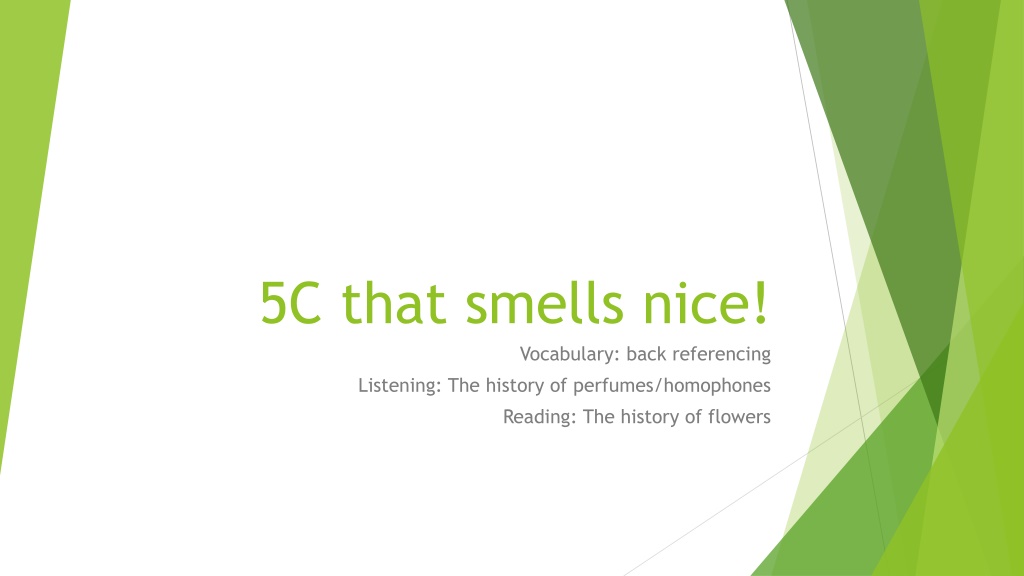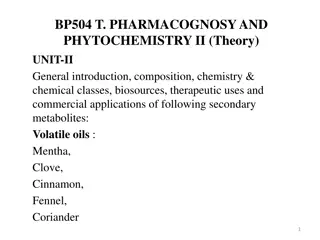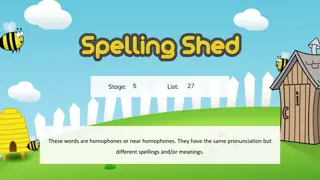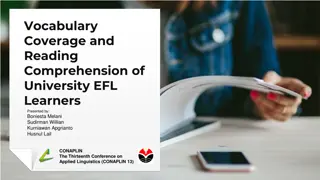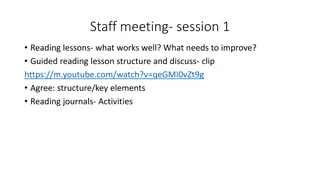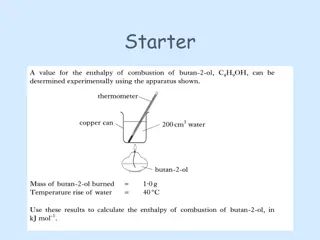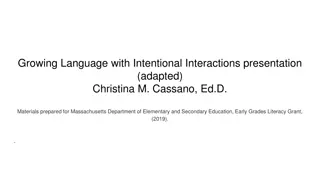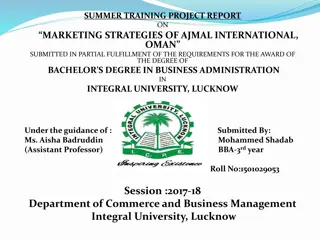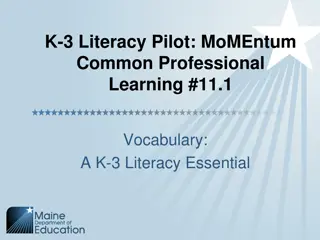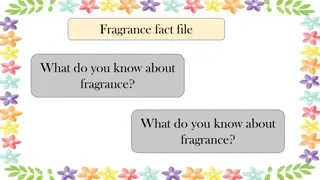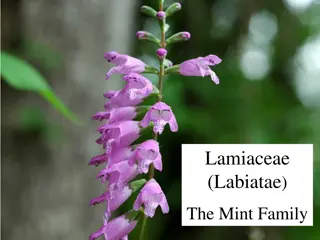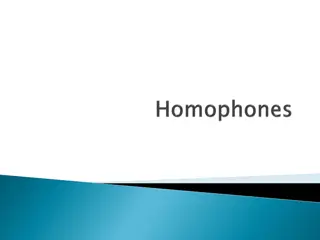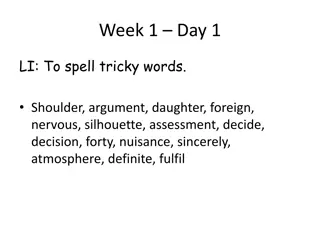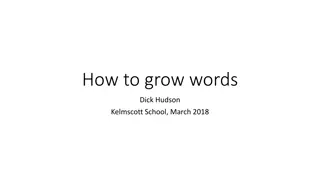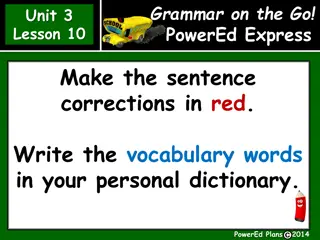Exploring Perfumes: History, Vocabulary, and Homophones
Delve into the intriguing world of perfumes through a lesson that covers the history of fragrances, vocabulary related to scents, and the concept of homophones. Discover the origins of perfumes, learn new words like "feast" and "fragrance," and explore the fascinating realm of homonyms. Engage in exercises, discussions, and listening activities to enhance your knowledge in this aromatic domain.
Download Presentation

Please find below an Image/Link to download the presentation.
The content on the website is provided AS IS for your information and personal use only. It may not be sold, licensed, or shared on other websites without obtaining consent from the author. Download presentation by click this link. If you encounter any issues during the download, it is possible that the publisher has removed the file from their server.
E N D
Presentation Transcript
5C that smells nice! Vocabulary: back referencing Listening: The history of perfumes/homophones Reading: The history of flowers
Todays lesson is about perfumes, so lets warm up with doing exercise one on page 42 To those questions add the following ones: What is your favorite perfume? How did you chose it? New vocabulary A tomb(n)-a large vault, typically an underground one, for burying the dead. -an enclosure for a corpse cut in the earth or in rock. -a monument to the memory of a dead person, erected over their burial place. A feast(n)-a large meal, typically a celebratory one. -an annual religious celebration -(v)-eat and drink sumptuously To soak(v)-make or allow (something) to become thoroughly wet by immersing it in liquid. A glove(n)-a covering for the hand worn for protection against cold or dirt and typically having separate parts for each finger and the thumb. A scent(n)-a distinctive smell, especially one that is pleasant -a trail indicated by the characteristic smell of an animal and perceptible to hounds or other animals. A fragnance(n)-a pleasant, sweet smell -a perfume or aftershave Wax(n)-a sticky yellowish mouldable substance secreted by honeybees as the material of a honeycomb; beeswax
Look at the photos on the page 42. What do you know about these famous people? Before listening, could you please try to fill in the blank gaps in exercise 2c) students book page 42. After that let s check your answers while listening the lecture about The History of Perfume. Now, listen again and make notes about the topics 1-8 in exercise 3b page 42. Homophones Homonym comes from the Greek homo which means same and onym which means name. When we talk about words, however, what should we use to define their names? The spelling or the pronunciation? Probably both. Homonyms, therefore, can be defined as two or more words that share the same spelling, or the same pronunciation, or both, but have different meanings.
Since there are several types of homonyms (e.g., same spelling but different pronunciation, same pronunciation but different spelling, same spelling and same pronunciation), further categorization is needed. We can say that homonyms represent the big category, from which 3 sub-categories emerge: Homophones: two or more words that share the same pronunciation but have different meanings. They may or may not be spelled on the same way. Examples: write and right, desert (to abandon) and desert(a thing deserved) Homographs: homonyms that share the same spelling. They may or may not have the same pronunciation. Examples: present (a gift) and present (to introduce), row(argument) and row (propel with oars) Heteronyms: those are homonyms that share the same spelling but have different pronunciations. That is, they are homographs which are not homophones. Example: desert (to abandon) and desert (arid region) These frequently confused homophones include: accept/except: Accept is a verb that means to take or receive. Except is used as a preposition or conjunction to mean but or exclude. affect/effect: Affect is a verb (in most cases) and indicates influence. Effect is a noun (in most cases) and is the result of an action or change. compliment/complement: Compliment means to say something nice about someone or something. Complement means something that enhances or completes. then/than: Then is a versatile word used as an adverb, noun or adjective to show the order of how things happened. Than is a subordinating conjunction you can use to make comparisons. to/too: To can be a preposition or infinitive when used with a verb. Too is an adverb or a synonym for also. you're/your: You're is a contraction for you are. Your is a pronoun.
Now, take a few minutes to practice homophones by doing exercise 4 b). Listen to ten sentences from the lecture and chose the correct word in each sentences: Now, how many more homophones can you think of? Reading The history of flowers Tulips and roses In this section we are going to deal with improving Reading skills band better understanding of a text as a whole. Before reading here are some explanation of less known words and expressions: To cultivate(v)-prepare and use (land) for crops or gardening; try to acquire or develop (a quality or skill). A botanist(n)-an expert in or student of the scientific study of plants. Botanical garden(n)-an establishment where plants are grown for scientific study and display to the public. Confetti(n)-small pieces of coloured paper traditionally thrown over a bride and bridegroom by their wedding guests after the marriage ceremony has taken place. currency(n)-a system of money in general use in a particular country.
Please read two texts about the history of flowers and try to answer the questions in exercise 5b) page 43 as well as exercise 6 a). For improving your speaking skills try to imagine that you are going to design of a new perfume or aftershave. Discuss the ideas which are given in exercise 7 page 43. For more information on these topics please do your workbook pp. 28. Thank you for your attention and Stay healthy, Stay home!
